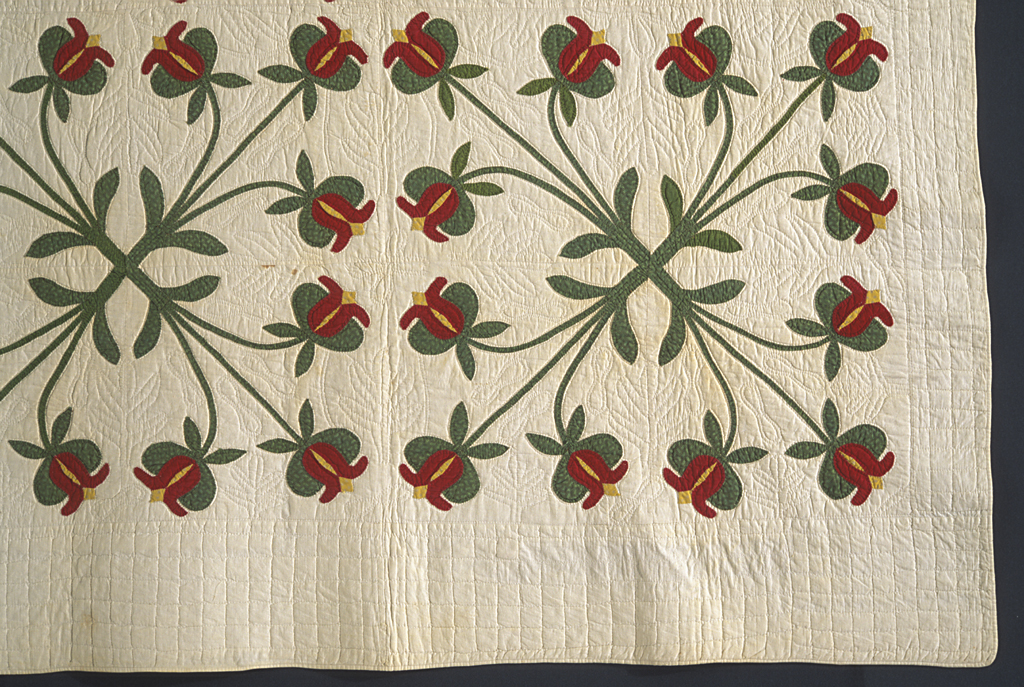Four-Block Tulip quilt, or Floral quilt, unknown maker from the United States
Artwork Overview
Four-Block Tulip quilt, or Floral quilt
, 1840–1900
Where object was made: United States
Material/technique: quilting; appliqué; cotton; piecing
Credit line: Gift of Edith Benson, Lawrence
Accession number: 1970.0206
Not on display
If you wish to reproduce this image, please submit an image request







